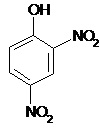Assignment:
Question 1. Distinguish the molecular mechanisms for competitive and noncompetitive inhibition.
Question 2. Suggest a mechanism by which some enzymes can be partially protected from thermal decomposition by high substrate concentration.
Question 3. Calculate αG'° for the following enzyme catalyzed reaction, using the equilibrium constant given for the reactions at 25°C and pH7. Show your work.
aspartate aminotransferase
Glutamate + oxaloacetate ↔ aspartate + α-ketoglutarate K'eq=6.8
Question 4. Describe, in your own words, the mechanism for chymotrypsin. Show how the amino acid residues of the active site participate in the reaction.
Question 5. Adults engaged in strenuous physical activity require an intake of about 160g of carbohydrate daily but only about 20 mg of niacin for optimal nutrition. Given the role of niacin in glycolysis, how do you explain the observation?
Question 6. Explain how ATP provides energy to reactions. Give an example.
Question 7. Isocitrate dehydrogenase is found only in the mitochondrion, but malate dehydrogenase is found in both the cytosol and mitochondrion. What is the role of cytosolic malate dehdrogenase?
Question 8. a. Draw the chemical reaction of ubiquinone that is important in electron transport. Use electron-pushing arrows to show what is happening.
b. What is the function of ubiquinone’s isoprenoid tail?
Question 9. Explain how carrots provide something that is essential for vision, and explain how this works biochemically.
Question 10. How do vitamins protect against ROS (reactive oxygen species)? Give at two examples of such vitamins, including reaction chemistry. What is the major source of ROS in cells?
Question 11. In your own words, explain how a pH gradient can be used to drive ATP synthesis.
Question 12. Individuals with a thiamine-deficient diet have relatively high levels of pyruvate in their blood. Explain this in biochemical terms.
Question 13. 2,4-DNP is a proton ionophore, allowing protons to diffuse across the mitochondrial membrane. 2,4-DNP was briefly used as a diet drug, but its use was discontinued because of associated fatalities. Explain why this chemical dramatically decreases the energy yield from glucose metabolism.
